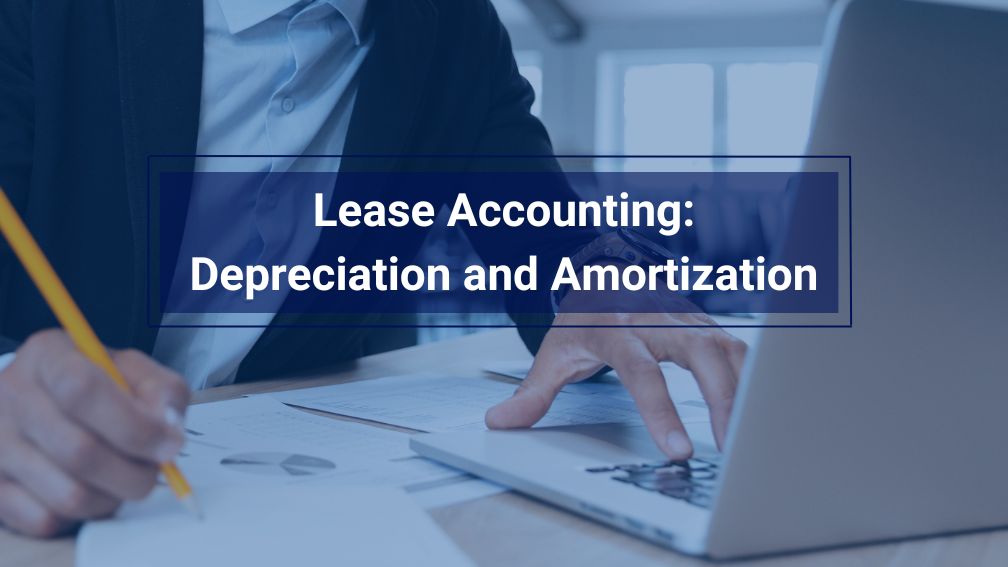Lease Accounting: Depreciation and Amortization
Last Updated on January 12, 2024 by Morgan Beard
Within the lease accounting world, there are several terms that often get confused. Two such terms are depreciation and amortization. Both depreciation and amortization refer to the process of allocating the cost of an asset over its useful life. However, they are used in different contexts and apply to different types of assets. In this blog post, we will delve into the differences between depreciation and amortization, specifically in the context of leases.
But before we dive into the specifics, let’s first understand what depreciation and amortization mean in general.
Defining Depreciation
Depreciation is a method used to allocate the cost of tangible assets over their estimated useful lives. Tangible assets are physical assets such as buildings, machinery, vehicles, furniture, and equipment. Over time, these assets suffer wear and tear or become obsolete, resulting in a decrease in their value.
Depreciation is essential for accurate financial reporting as it helps businesses account for the cost of an asset over its useful life. It also allows businesses to account for the wear and tear or obsolescence of the asset. Depreciation expenses are recorded on the income statement and balance sheet and reduce the value of the asset eventually down to zero over the useful life of the asset.
Defining Amortization
Amortization, on the other hand, is the process of allocating the cost of intangible assets over their estimated useful lives. Intangible assets are non-physical assets that lack a physical substance. Examples include patents, copyrights, trademarks, and goodwill.
Similar to depreciation, amortization helps businesses account for an intangible asset over its useful life. Intangible assets do not suffer physical wear and tear like tangible assets. Instead, their value diminishes over time due to legal or contractual limitations. Amortization expenses are recorded on the income statement and reduce the value of the intangible asset on the balance sheet down to zero dollars.
Depreciation and amortization are accounting methods to allocate the cost of an asset over its estimated useful life.
The Application in Lease Accounting
Depreciation applies to tangible assets like property, plant and equipment. It spreads out the cost of a tangible asset over its useful life to match the asset’s cost to the revenue it helps generate. For example, a piece of equipment that costs $10,000 and has a 5-year useful life would be depreciated at $2,000 per year using the straight-line depreciation method.
Amortization applies to intangible assets like patents, copyrights, and trademarks. It allocates the cost of an intangible asset over its useful life to match costs with revenue. For example, a patent that costs $20,000 and has a 10-year useful life would be amortized at $2,000 per year.
So, in summary, both depreciation and amortization spread out asset costs over time, but apply to different types of assets. Check out our blog explaining how to calculate your lease amortization schedules.
Key Differences between Depreciation and Amortization
Now that we have examined depreciation and amortization in the context of leases, let’s summarize the key differences between the two:
- Asset Type: Depreciation applies to tangible assets, while amortization applies to intangible assets.
- Nature of Decrease in Value: Depreciation accounts for the physical wear and tear or obsolescence of an asset, while amortization reflects the legal or contractual limitations that reduce the value of an intangible asset over time.
- Placement on Financial Statements: Depreciation expenses are recorded on the income statement and decrease the value of the asset on the balance sheet. Amortization expenses also appear on the income statement but reduce the value of the intangible asset on the balance sheet.
- Tax Implications: Depreciation expenses can lower a company’s tax liability, while amortization expenses typically cannot.
- Application in Lease Accounting: Depreciation applies to the leased tangible asset itself, while amortization applies to intangible assets associated with the lease, such as leasehold improvements.
Depreciation & Amortization Summary
In summary, depreciation and amortization are both essential concepts in the world of accounting. While they share similarities, they differ in terms of asset type, nature of decrease in value, and their placement on financial statements.
In lease accounting, depreciation is used to account for the diminishing value of tangible leased assets, while amortization is employed to allocate costs associated with intangible assets, such as leasehold improvements.
By comprehending the distinctions between depreciation and amortization, businesses, CPAs, and real estate teams can ensure accurate lease accounting and streamline their lease management and accounting processes.
Accurately recording depreciation and amortization expenses allows companies to represent the true value of assets on their balance sheet. It also provides key insights into a company’s financial health and profitability by calculating the depreciable base over the asset’s useful life. This process is necessary for creating your organization’s cash flow statement, profit and lose statement as well as for accounting and tax purposes over a financial year. Adhering to accounting standards for depreciation and amortization leads to financial reporting that investors and stakeholders can rely on to evaluate a company’s performance.
So, the next time you come across the terms “depreciation” and “amortization” in the context of leases, you’ll have a clear understanding of their meanings and how they apply.
Looking for lease accounting resources to help your ASC 842, IFRS 16 or GASB efforts, then check out our resources page.
Lease Accounting Resources
Check out our resource hub. We have the templates, spreadsheets, and calculators to help you manage entire lease lifecycle.

